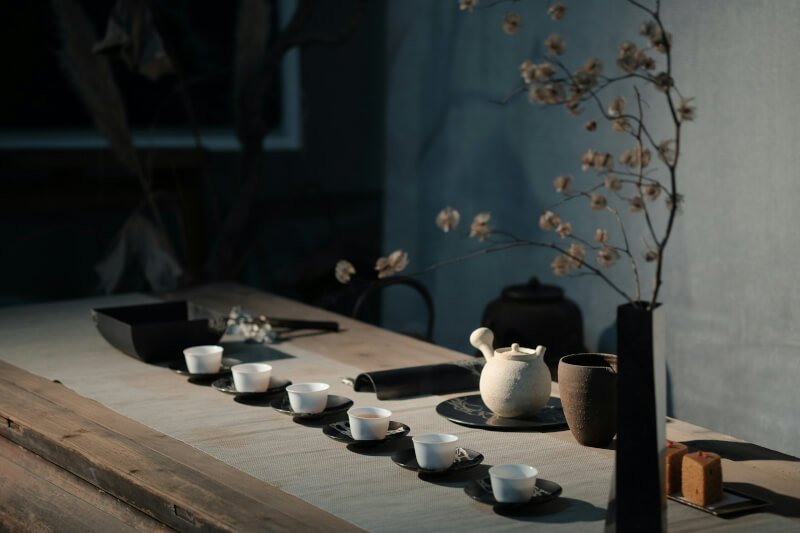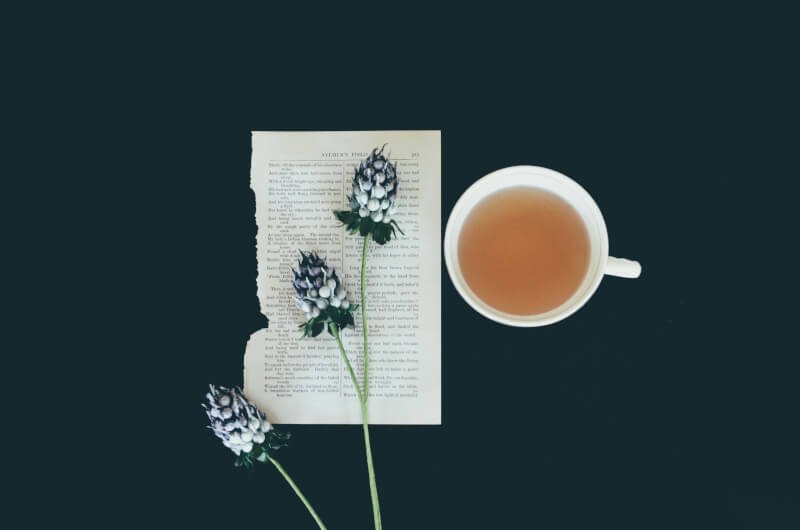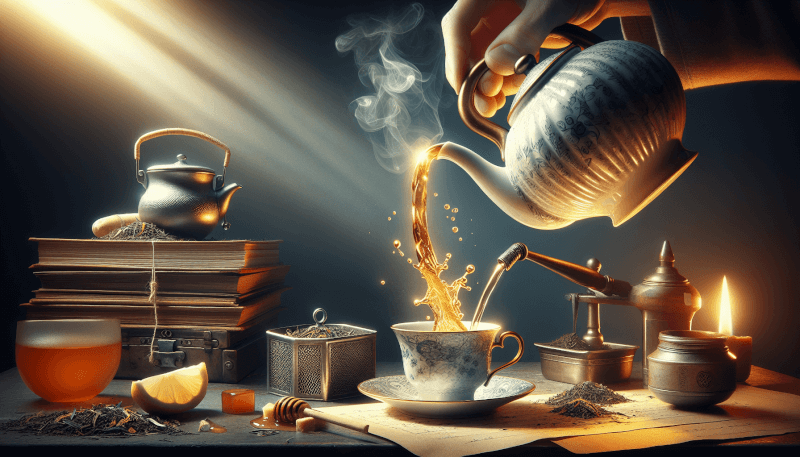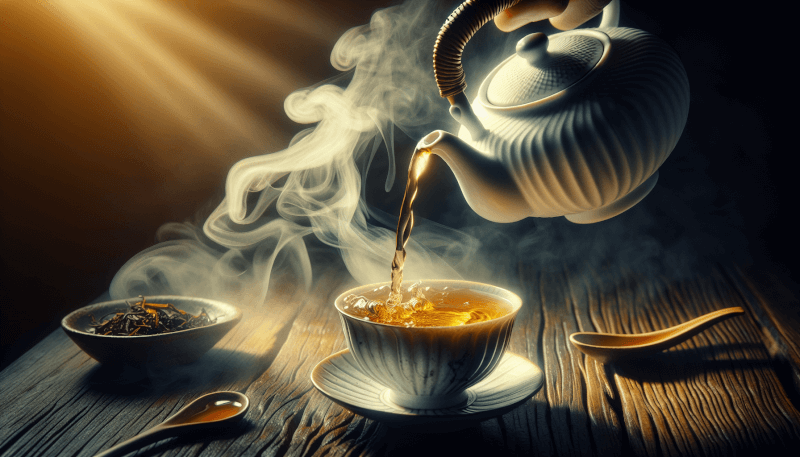Tea has been enjoyed for centuries not only for its delightful taste but also for its potential health benefits. In this article, you will uncover the art of tea brewing and how different techniques can enhance the medicinal properties of your favorite herbal blends. Whether you prefer a soothing cup of chamomile for relaxation or a revitalizing matcha green tea for an energy boost, by exploring various brewing methods, you can harness the full potential of these teas to enhance your overall well-being. Get ready to embark on a journey of discovery as you unlock the secrets of different tea brewing techniques and unlock a world of medicinal benefits.
Traditional Brewing Techniques
Steeping
Steeping is the most common and simplest method of brewing tea. It involves pouring hot water over tea leaves and allowing them to steep for a certain period of time. The time depends on the type of tea being brewed and personal preference. During the steeping process, the water extracts the flavor, aroma, and nutrients from the tea leaves, resulting in a flavorful cup of tea. Steeping is suitable for a wide variety of teas, including black tea, green tea, white tea, and herbal teas.
Infusion
Infusion is another traditional brewing technique that involves steeping tea leaves in hot water, similar to steeping. However, infusion typically involves a longer steeping time and a larger volume of water compared to traditional steeping. This method is commonly used for delicate teas like white and green teas, as it allows for a more gentle extraction of flavors. The water temperature is also usually lower to prevent the tea from becoming bitter. Infused teas tend to have a light and subtle taste, making them ideal for those who prefer a milder flavor.
Decoction
Decoction is a brewing technique commonly associated with certain types of herbal teas. It involves simmering the tea leaves or herbs in water for an extended period of time. Unlike steeping and infusion, which primarily extract the flavors and aromas of the tea, decoction extracts the medicinal compounds and beneficial properties of the herbs. This brewing technique is often used for herbal teas that possess roots, bark, or tougher plant parts, as it requires higher heat and a longer brewing time to release their medicinal qualities fully. Decoctions are known for their robust flavors and therapeutic effects.
Milk Tea Brewing Techniques
Indian Chai
Indian chai is a delicious and popular milk tea that is brewed with a blend of aromatic spices, tea leaves, milk, and sweeteners like sugar or honey. To brew Indian chai, the spices, such as cardamom, cinnamon, cloves, and ginger, are simmered in water together with loose tea leaves. After the flavors are infused, milk is added, and the mixture is brought to a gentle boil. The chai is then strained, sweetened to taste, and served hot. Indian chai is known for its rich and bold flavors, making it a favorite choice for those who enjoy a spiced and creamy tea experience.
Hong Kong Milk Tea
Hong Kong Milk Tea, also known as “silk stocking milk tea,” is a beloved beverage in Hong Kong. It is made by brewing a strong black tea, such as Ceylon or Assam, with tea leaves contained in a muslin bag or fabric filter. The tea is then strained and mixed with evaporated milk and/or condensed milk to achieve a creamy and smooth texture. Hong Kong Milk Tea is often consumed with breakfast or as a refreshing afternoon pick-me-up. Its robust and full-bodied flavor, combined with the velvety texture from the milk, creates a unique and satisfying tea-drinking experience.
Bubble Tea
Bubble tea originated in Taiwan and has gained popularity worldwide. It is a fun and unique milk tea beverage that is typically served cold and topped with chewy tapioca pearls, also known as boba. To make bubble tea, black tea or green tea is brewed and cooled. The cooled tea is then mixed with milk, sweeteners like sugar or honey, and shaken together. Finally, the tea is poured over a cup filled with tapioca pearls and ice. Bubble tea is an exciting way to enjoy milk tea, as the chewy pearls add a delightful texture to each sip.

Cold Brewing Techniques
Cold Brewed Loose Leaf Tea
Cold brewing is a brewing method that involves steeping tea leaves in cold or room temperature water for an extended period. Unlike hot brewing methods, cold brewing extracts the flavors and aromas of the tea more slowly, resulting in a smoother and less bitter taste. To cold brew loose leaf tea, simply add the desired amount of tea leaves to a container of water, refrigerate, and let it steep for several hours or overnight. The result is a refreshing and naturally sweet tea that can be enjoyed chilled.
Iced Tea Bags
Iced tea bags are specially designed for cold brewing. These tea bags are typically larger and contain a higher concentration of tea leaves to ensure a robust flavor when brewed with cold water. To make iced tea using tea bags, simply place a tea bag in a pitcher or large container, add cold water, and let it steep for several hours. Once the desired strength is achieved, remove the tea bags and serve the iced tea over ice. Iced tea bags offer convenience and are a quick way to enjoy a refreshing glass of iced tea.
Sun Tea
Sun tea is a unique brewing method that takes advantage of the sun’s heat to slowly steep the tea leaves. To make sun tea, place tea bags or loose tea leaves in a glass container filled with cold water. Cover the container and place it in direct sunlight for several hours. The sun’s rays will gradually heat the water and infuse the tea leaves, creating a naturally flavored tea. Sun tea is a great option for those who prefer a milder and less bitter tea, as the slow brewing process allows for a gentle extraction of the tea’s flavors.
Whisking Techniques
Matcha Tea
Matcha tea is a vibrant and powdered green tea that is highly prized for its health benefits and unique flavor. To prepare matcha, start by sifting the matcha powder into a bowl to remove any clumps. Gradually add hot water to the bowl, then whisk the mixture vigorously with a bamboo whisk until it becomes frothy and well-blended. The result is a smooth and velvety tea with a rich umami flavor. Matcha tea is known for its high concentration of antioxidants and caffeine, making it a popular choice for a morning pick-me-up or a calming ritual.
Butter Tea
Butter tea, also known as “po cha,” is a traditional Tibetan tea that combines strong black tea with butter and salt. To make butter tea, start by brewing black tea leaves in hot water. Once the tea is steeped, it is poured into a bowl or pot along with a generous amount of butter and a pinch of salt. The tea is then stirred or churned vigorously to create a frothy and creamy texture. Butter tea is a staple in Tibetan culture and is known for its nourishing properties, providing energy and warmth in high-altitude regions.

Tonic Brewing Techniques
Turmeric Tea
Turmeric tea, also known as “golden milk,” is a soothing and aromatic tonic that is brewed using turmeric root or ground turmeric powder. To make turmeric tea, bring water to a boil and add turmeric root or powder, along with other spices like ginger and cinnamon if desired. Allow the mixture to simmer for 10-15 minutes, then strain and add sweeteners like honey or maple syrup. Turmeric tea is cherished for its anti-inflammatory properties and is often consumed for its potential health benefits.
Ginger Tea
Ginger tea is a refreshing and invigorating tonic that is made by steeping fresh ginger root or ginger slices in hot water. To brew ginger tea, simply add the ginger to boiling water and let it simmer for about 10 minutes. The longer the ginger is steeped, the stronger and spicier the tea becomes. Ginger tea is known for its soothing properties, easing nausea, aiding digestion, and providing a warming sensation to the body.
Honey Lemon Tea
Honey lemon tea is a comforting and immune-boosting tonic that combines the subtle sweetness of honey with the tangy freshness of lemon. To make honey lemon tea, place a slice of lemon in a cup, add hot water, and let it steep for a few minutes. Remove the lemon slice and stir in honey to taste. Honey lemon tea is a popular choice during chilly weather or when fighting off a cold, as it provides warmth, vitamin C, and the soothing benefits of honey.
Herbal Tea Brewing Techniques
Infusions
Infusions are a popular method for brewing herbal teas. Simply add the desired amount of dried herbs or flowers to a teapot or infuser, pour hot water over them, and let them steep for a few minutes. Infusions are a gentle way of extracting flavors and aromas from herbs, resulting in a mild and soothing tea. They are suitable for a wide range of herbal teas, including chamomile, peppermint, and lavender.
Decoctions
Decoctions are commonly used for herbal teas that contain tougher plant parts like roots, bark, or seeds. To make a decoction, combine the herbs with cold water in a pot and bring it to a boil. Reduce the heat and let it simmer for a longer period, usually around 20-30 minutes. Decoctions extract the medicinal properties and compounds from the herbs, resulting in a robust and potent tea. Herbs like ginger, dandelion root, and licorice root are often brewed using this technique.
Tisanes
Tisanes are herbal teas that are made from infusing or decocting various botanical ingredients such as flowers, leaves, bark, or seeds. Unlike traditional teas, tisanes do not come from the Camellia sinensis plant. Common tisanes include chamomile, hibiscus, and rooibos tea. Each botanical ingredient offers unique flavors and potential health benefits. Tisanes are loved for their versatility and the ability to be enjoyed at any time of the day due to their caffeine-free nature.

Floral and Herbal Blend Brewing
Chamomile Lavender Tea
Chamomile lavender tea is a calming and aromatic blend that combines the gentle flavors of chamomile flowers and soothing lavender. To make this blend, simply mix equal parts dried chamomile flowers and lavender buds. Place the blend in a tea infuser or teapot, pour hot water over it, and let it steep for a few minutes. Chamomile lavender tea is often enjoyed before bedtime to promote relaxation and quality sleep.
Rosehip Hibiscus Tea
Rosehip hibiscus tea is a vibrant and tart blend that boasts a high content of vitamin C and antioxidants. To make this blend, combine dried rosehips and hibiscus petals in a teapot or infuser, then pour hot water over them. Allow the blend to steep for several minutes before straining. Rosehip hibiscus tea can be enjoyed hot or iced and offers a refreshing and tangy flavor profile.
Mint Lemon Verbena Tea
Mint lemon verbena tea is a refreshing and invigorating blend that combines the coolness of mint with the citrusy notes of lemon verbena. To create this blend, mix dried mint leaves and lemon verbena leaves in a teapot or infuser, then add hot water and let it steep for a few minutes. Mint lemon verbena tea is perfect for a midday pick-me-up or as a soothing digestif after a meal.
Aromatherapy Tea Brewing
Lemon and Eucalyptus Tea
Lemon and eucalyptus tea is an uplifting and revitalizing brew that combines the bright flavors of lemon with the refreshing essence of eucalyptus. To make this tea, steep dried lemon peel and eucalyptus leaves in hot water for a few minutes. The aroma of lemon and eucalyptus can provide a sense of clarity and relaxation, making it an excellent choice for a rejuvenating tea break.
Peppermint and Lavender Tea
Peppermint and lavender tea is a soothing and aromatic blend that combines the invigorating flavors of mint with the calming essence of lavender. To brew this tea, mix dried peppermint leaves and lavender buds in a teapot or infuser, then pour hot water over them and let them steep for a few minutes. Peppermint and lavender tea is known for its calming properties and can be enjoyed to unwind and destress.

Fermented Tea Brewing Techniques
Kombucha
Kombucha is a unique and effervescent fermented tea that is made by fermenting sweetened tea with a culture of bacteria and yeast, known as a SCOBY (symbiotic culture of bacteria and yeast). The SCOBY consumes the sugar in the sweetened tea and converts it into a variety of beneficial acids, enzymes, and probiotics. To brew kombucha, black or green tea is first steeped in hot water, sweetened with sugar, and left to cool. Once cooled, the liquid is combined with the SCOBY and allowed to ferment for several days or weeks, depending on taste preference. The result is a tangy and fizzy beverage with potential digestive and immune-boosting benefits.
Pu-erh Tea
Pu-erh tea is a type of fermented tea that originates from the Yunnan province in China. It undergoes a unique fermentation and aging process that can last for several months or even years. During fermentation, beneficial bacteria and enzymes transform the tea leaves, resulting in a distinct earthy flavor and aroma. To brew pu-erh tea, rinse the tea leaves with hot water to remove any impurities, then steep them in hot water for a few minutes. The longer the fermentation process, the richer and more complex the pu-erh tea becomes.
Ayurvedic Tea Brewing Techniques
Cinnamon Cardamom Tea
Cinnamon cardamom tea is a warming and aromatic brew that combines the flavorful spices of cinnamon and cardamom. To make this Ayurvedic-inspired tea, simmer cinnamon sticks and cardamom pods in water for a few minutes. The spices infuse the water, creating a fragrant and comforting beverage. Cinnamon cardamom tea is often enjoyed during colder months or as a soothing digestive aid after meals.
Ashwagandha Tea
Ashwagandha tea is brewed using the root or powder of the ashwagandha plant, a herb that is highly valued in Ayurvedic medicine for its potential health benefits. To make ashwagandha tea, simmer ashwagandha roots or powder in water for about 10-15 minutes, then strain and sweeten if desired. Ashwagandha tea is known for its adaptogenic properties, which may help reduce stress and promote overall well-being.
Tulsi Tea
Tulsi, also known as holy basil, is a sacred herb in Ayurveda that is often brewed as a tea for its potential health benefits. To make tulsi tea, add fresh or dried tulsi leaves to hot water and steep for several minutes. Tulsi tea offers a refreshing and slightly spicy flavor, along with the potential to support a healthy immune system and reduce inflammation.
By exploring the different tea brewing techniques mentioned above, you can discover a wide range of flavors, aromas, and potential health benefits. Whether you prefer the traditional brewing methods, milk tea variations, cold brewing techniques, or specialized brewing methods like whisking or fermentation, there is a tea brewing technique to suit every palate and need. Experiment with different herbs, spices, and blends to create your perfect cup of tea and enjoy the journey of exploring the wonderful world of tea. Happy brewing!


